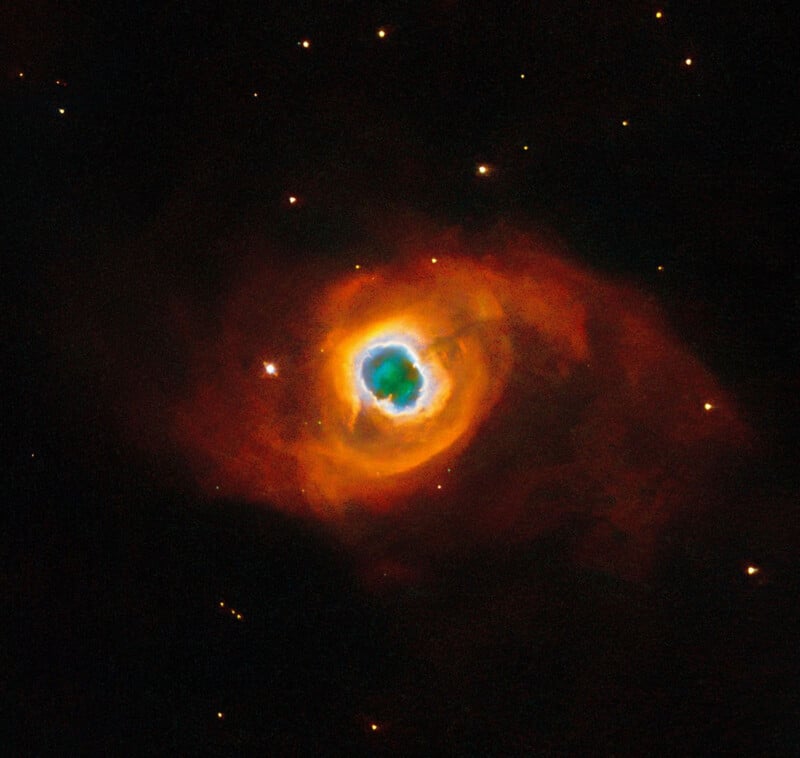A Giant Star’s Spectacular Dying Breaths Caught on Camera

NASA’s Hubble Space Telescope captured a giant star’s final moments. The striking image looks like a swirling painting rather than a star’s death throes, which are very long to human observers but a cosmic blink.
The black, orange, and green image shows “vast clouds of ionized atoms” being thrust into the cosmos by a star on its last legs. The picture shows the planetary nebula Kohoutek 4-55, a Milky Way galaxy inhabitant located only 4,600 light-years from Earth in the constellation Cygnus. As far as the cosmos goes, this nebula is extremely close to Earth — and, for that matter, the Hubble Space Telescope, which orbits Earth about 320 miles (515 kilometers) above its surface.
Planetary nebulae are “the spectacular final display at the end of a giant star’s life,” NASA explains. In this case, a red giant star has spent all its available fuel and is now actively shedding its final layers of gas, “a final burst of nuclear fusion.”
The dying star’s exposed core gets exceptionally hot, which radiates ultraviolet light outward and energizes the clouds of gas the star releases. This makes the clouds glow very brightly. In Hubble’s new image, the red and orange wavelengths indicate the presence of nitrogen, while the green region is hydrogen and blue is oxygen.
“Kohoutek 4-55 has an uncommon, multi-layered form: a faint layer of gas surrounds a bright inner ring, all wrapped in a broad halo of ionized nitrogen,” NASA describes. “The spectacle is bittersweet, as the brief phase of fusion in the core will end after only tens of thousands of years, leaving a white dwarf that will never illuminate the clouds around it again.”
This Hubble image not only shows a red giant star’s spectacular ending but was also the final image one of Hubble’s imaging instruments captured. This photo was captured using Hubble’s Wide Field and Planetary Camera 2 (WFPC2), which was installed in 1993 to replace the telescope’s original Wide Field and Planetary Camera. WPFC2 was responsible for many of Hubble’s most incredible discoveries and images. It was replaced in 2009 by the Wide Field Camera 3 during the final Hubble servicing mission.
“A mere ten days before astronauts removed Hubble’s WFPC2 from the telescope, the instrument collected the data used in this image: a fitting send-off after 16 years of discoveries. Image processors used the latest and most advanced processing techniques to bring the data to life one more time, producing this breathtaking new view of Kohoutek 4-55,” NASA concludes. A fitting send-off indeed, and a cosmic sight that remains as breathtaking now as it did in 2009.